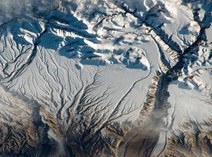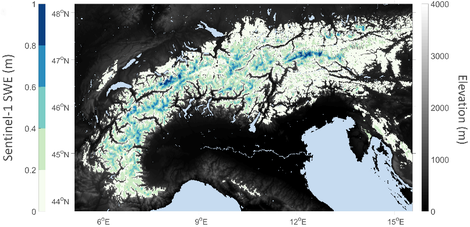Snow on Earth
How much snow do we have on Earth? Unfortunately, this critical question yet needs to be answered by science.
Why
Snow impact on climate, agriculture and industry is huge, because the water stored in snow, or snow water equivalent (SWE), is the source of drinking water for 15% of the world’s population.
What we do
SWE is still poorly observed from space. Current satellite products have a spatial resolution of 25 km – too course for mapping the variability in mountainous areas. Moreover, they only cover early-winter dry snow conditions and are thus lacking the snow melt season, and have a tendency to saturate at snow depths below 1 m.
Using observations from the recently launched ESA and Copernicus Sentinel-1 constellation, we are processing SWE estimates at an unprecedented 1-km spatial resolution, covering the entire snow season across the globe, including mountainous areas.
The illustration shows the spatial distribution of SWE in the Alps for March 1, 2017.

In February 2017, a multitude of sensors were flown on airplanes over the high-elevation Grand Mesa plateau in Colorado, USA. These airborne observations are correlated with local field measurements, collected by a large group of snow scientists.
Ongoing research is exploring which sensor is most suitable for SWE estimation, to provide recommendations for the design of a future dedicated snow satellite mission in space.


